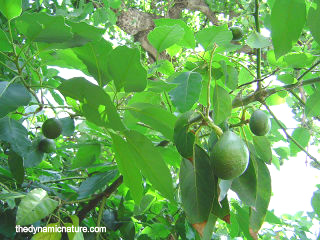Vitamin E - a potent antioxidant
Vitamin A Vitamin B complex Vitamin C Vitamin D Vitamin E Vitamin K
Vitamin E, comprises of two groups of fat soluble organic compounds
namely, the tocopherols and
tocotrienols.
The tocopherol group consists four members namely, alpha tocopherol, gamma tocopherol,
beta tocopherol, and delta tocopherol.
The tocotrienol group consists of four members namely alpha tocotrienol,
gamma tocotrienol, beta tocotrienol, and delta tocotrienol.
Though vitamin E was listed in 1922 only forty years later it was established as a very essential nutrient
and later categorised as vitamin E. Vitamin E is synthesised only by plants.

avocados
Vitamin E is a potent antioxidant
and prevents oxidative stress in humans by neutralising free radicals.
Free radicals, damaging our cells, cause cancer and cardio vascular diseases.
Vitamin E helps in many biological processes like immune function and DNA repair.
Vitamin E is used in the skin care and
hair care preparations, because of its antioxidant activity.
The free radicals are the causative agents for aging and wrinkle formation.
Free radicals formed in UV light exposure cause the growth of cataract
and the
intake of vitamin E prevents the cataract growth.
The risk of getting Parkinson's disease and
Alzheimer's disease is reduced by regular intake of
vitamin E.
Deficiency
As vitamin E is fat bound, persons having problems of fat digestion, develop the deficiency of this vitamin.
In vitamin E deficiency anaemia may be caused due to the oxidative damage by free radicals
of the red blood corpuscles.
Peripheral neuropathy is observed in persons suffering from vitamin E deficiency. This causes tingling sensation and pain
in the hands and the feet with the loss of sensation.
Skeletal myopathy, retinopathy and stiff joints are the other symptoms of vitamin E deficiency.
Toxicity
When very high doses are taken vitamin E was found to cause muscle weakness, blurred vision, fatigue and diarrhoea.
There no toxicity when Vitamin E rich food is consumed.
Sources
Vegetables, leafy vegetables, vegetable oils, fruits and whole grains are excellent sources of this vitamin.
Google+ page
By Mahmood Syed Faheem
Advertisement
Disclaimer: Not professional advice - The above content is just for informational & educational purpose only If you need specific medical advice please seek a professional doctor who is licensed or knowledgeable in that area.